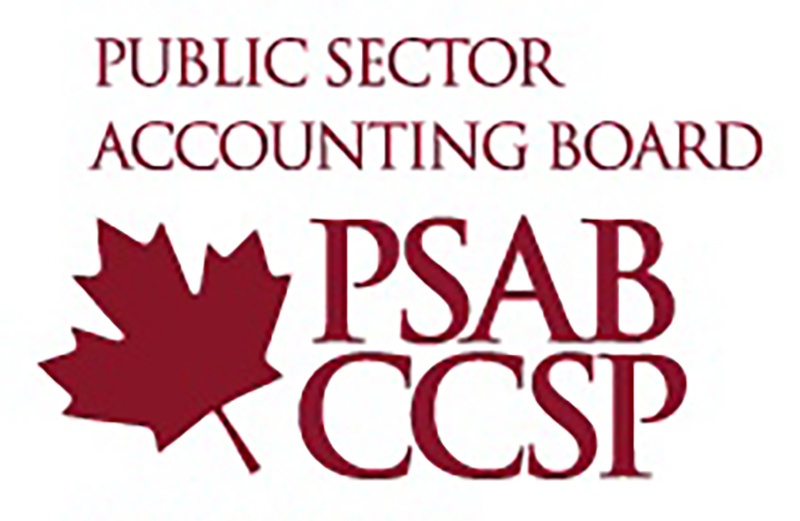School District 83
- Rachel Raymond
- Success Stories
- minute(s)Time to Focus on the Big Picture: Automating Financial Statements for School District 83 Project: PSAB Automation Organization: School District 83 Students: 6,100 Platform: Workiva The Challenge The finance team at School District 83 (Okanagan-Shuswap, British Columbia) was looking to save time and money; reduce errors; and improve its reporting reliability, repeatability, and standardization; by automating its financial statements. When we met the team, their data preparation stage was heavily dependent on complex spreadsheets—requiring too much keying and leaving little time for analytics. “We utilized Excel, as well as other Office products—like Word for our financial notes and our financials, even discussion analysis. So, it was a very fractured overall process when we...look back on it,” said Jeremy Hunt, Finance Director for the district. The team was accustomed to finalizing, formatting, and preparing statements manually—a time-consuming and frustrating process. Additionally, they were required to complete Local Government Data Entry (LGDE) forms, which meant replicating the information from their annual report and manually keying it into the ministry’s template for online submission. Jeremy explained that in previous years, the team's work was paper-heavy. "We have binders. Nine-inch or 12-inch binders. I know they’re massive for year-end. And the backs of those…are all printed and messy,” he said. What’s more, the finance team frequently had difficulty finding original hard-copy source documents to back up their data. Jeremy looked forward to updating their process, so they “wouldn’t have to find a paper copy every year…that validates a number.” The district’s team also wished to collaborate simultaneously without risk of overwriting crucial information. “We wanted something that allowed access to the individual that was required to do that work, but locked down areas where we didn't want them working,” said Dale Culler, Secretary–Treasurer/CFO. They were also interested in a multi-functional tool. “The biggest limitation that we have in our department...is staffing resources to move forward with any initiative...and when we consider the end product, we wanted to move towards something that would allow us to potentially consolidate...future reporting requirements,” said Jeremy. The Solution FHB met with the district’s team to evaluate their existing processes and develop a customized solution to meet their needs. Initially, the conversation included using Caseware. “The Caseware discussion was because that's what we...were familiar with. But we also wanted to be open, to hear about advancements in the industry, where it's going...Caseware requires a very specific knowledge. We wanted something with the structure, the rows and columns that people are familiar with,” said Dale. In the end, FHB recommended Workiva. As a cloud-based platform, Workiva offers a collaborative database (Wdata) as a single source for data entry/management and an advanced report writer (Wdesk) for instant and automatic preparation of consistent, formatted reports—mitigating risk of data-entry and calculation errors and improving overall report accuracy. "It was concerning that it would be difficult to learn a new piece of software. But once we got into it and started to see the back end of it and how it really worked, and became more familiar with it, it was very Excel-based. That took away a lot of the reservations that I had, and I believe Dale had as well, about us being able to understand and use it in a logical manner that would follow what we're used to,” said Jeremy. The Service “Christine was on top of it. She kept us on the tracks…I can’t say enough about what she did for us. She’s very helpful.” –School District 83 Finance Director Jeremy Hunt Throughout the project, the School District 83 staff was highly impressed with the responsiveness of the FHB team. [FHB Principal Consultant Christine Gilbert, CPA, CA] did a great job…she would answer questions whenever I would throw them over, and…usually it was within like an hour,” said Jeremy. “It was a great experience.” “It's definitely appreciated that Christine had some experience in PSAB that we could draw support from,” he added. When asked to rate FHB’s general knowledge of Workiva and reporting standards on a scale of one to 10, with 10 being “the greatest ever,” Jeremy responded, “It’s a nine or a 10.” He wouldn’t hesitate to recommend FHB to peers and colleagues. “They were patient when we were struggling to keep up…they were accessible and worked with us on issues that we had…I would definitely recommend that FHB would be a good partner to implement any accounting-related software.” –Jeremy Hunt The Results So far, the greatest benefit of the Workiva implementation has been time savings. “It's just going to reduce the amount of…data entry that we have historically relied on. We were using reports from our old clunky system that doesn't provide great reporting…mapping was not the greatest previously. So, it's...going to speed up that manual entry time. It will help us validate data as well,” said Jeremy. Jeremy added that Workiva has far exceeded his expectations. “User friendliness has been amazing...it didn't take much training, to be honest, to understand how to use this product...on top of that, I can see how it links everything together and can easily produce something that is better than what we have previously done over many hours—in just an hour,” he said. Dale agreed, adding, “Workiva provides one place...in which to do review...and because it's very consistent with the way that we've been trained to look for things when...creating working papers, it'll be much quicker to do that." Before Workiva, "when things were disjointed...I’d have to interrupt...Jeremy...stop his workflow, so that he could show me where things were. In the new platform, I can just look at the progress of the review as it is...I don't have to wait for it to be finished; I can look at it live,” he said. Looking Ahead In light of this project’s success, District 83 has decided to move forward with two additional projects. “So…the bigger one is going to be the budget…we want to integrate our budgeting into Workiva,” said Jeremy. “We’re thinking next year, maybe toward the end of 2023, into 2024.”“...After this audit season, we’ll look at financial reporting quarterly…at some point maybe move into monthly statements,” said Jeremy. “Quarterly reporting is probably the next logical step...before we even do the budget,” said Dale. With all of the time they’ve saved, Jeremy looks forward to taking on higher-level tasks. “I'm fairly production-based right now in my job as a director, whereas I need to be more focused on oversight and the bigger picture,” he said. The District 83 team is pleased with how far they’ve come, and optimistic about the future. “We’re just scratching the surface of what Workiva can do for us,” said Jeremy. © 2025 FH Black Inc. All rights reserved. Content may not be reproduced, excerpted, distributed, or transmitted without prior written consent.
School District 83 wanted to improve and standardize its PSAB reporting process, making it more reliable, repeatable, and faster without increasing resources. They achieved that and more with the help of FHB.
READ MORE
Navigating PSAB: Asset Retirement Obligation Standards
- Bill Cox, BDO
- PSAB
- minute(s)Could Be Some Big Changes - And Some Unexpected Ones How Did We Get Here? The relatively new[1] Public Sector Accounting Board (“PSAB”) standard “PS 3260 Liability for Contaminated Sites” turned out to not have much of a financial statement impact for most governments and government organizations. Certainly the Federal, Provincial and Territorial Governments ran into some of the most significant challenges. But most others were not faced with hugely significant liabilities to report. Likely the most significant reason for this is that PS 3260 applies, for the most part, to assets that are not in productive use. It was a logical progression for PSAB to consider whether standards were required for Asset Retirement Obligations (“AROs”). That is, standards that apply to assets that are in productive use. In addition to being a logical progression, many government organizations that moved to Public Sector Accounting Standards (“PSAS”) recently [2] had been applying ARO standards pursuant to the previous accounting framework they had been following. It was time for PSAB to look to see what, if any, standards were required in this area. An ARO project was set in motion, a task force put to work, and a Statement of Principles issued in August 2014. The main features of the Statement of Principles were: Legal, constructive and equitable obligations could create an ARO. The carrying value of the tangible capital asset is increased by the ARO and expensed through amortization of the asset. Subsequent remeasurement of liability would require adjustment to carrying value of the asset if it is still in use. Post-retirement operation, maintenance and monitoring form part of the ARO. A present value technique is often the best method with which to estimate the liability. In the period since the issue of the Statement of Principles the task force has been reviewing responses and developing a proposed standard. Expect an exposure draft in December 2016. Does It Make Sense To Have Different Standards For Similar Types of Liabilities? When the ARO standards arrive there will be three PSAS standards that deal with items that, at least on the surface, appear to have some similarities. These will be: - the pending ARO standard - the recent PS 3260 Liability for Contaminated Sites standard - and long-existing PS 3270 Solid Waste Landfill Closure & Post-closure Liability standard Each of these standards deals with situations related to clean up of land. On closer review though, it might be reasonable to consider Contaminated Sites as the odd one out. This standard deals with existing contamination as opposed to the other standards which deal with anticipated future costs. But, the requirements for closure and post-closure activities and monitoring of a landfill are identical concepts to those of AROs. Should they not then have the same accounting requirements? Accounting for Landfill Obligations The current Landfill Liability section has some similarities and some differences to the ARO proposals. Likely the most significant difference is that estimated liability amounts are not capitalized to an asset. Why is that? Quite simply the standard came into play in 1998 - a full 11 years before the adoption of PS 3150 Tangible Capital Assets. Capitalization really was not an option at that point. It is only logical that the ARO Task Force will consider whether there should be harmonization of the ARO and Landfill Liability standards. What Would a Harmonized ARO/Landfill Liability Standard Look Like? At first glance, one might expect that the liability amount would not change by the applying ARO concepts to landfill liabilities. After all, both standards suggest that you may want to look at present value techniques to account for future obligations. Yet, there could be a distinct difference in one area. Change could occur in accounting for costs that will be incurred regardless of the level of activity of the landfill. A portion of capping, closure and monitoring costs will be incurred whether the landfill contains 1,000 tonnes of waste or 100,000 tonnes. These “fixed” costs would likely be immediately capitalized at the time of opening the landfill under an ARO standard. Under the current Landfill Liability standard these costs, like those related to volumes, are accounted for as the capacity of the landfill is used. The impact of this different treatment would be an increase in a government’s Net Debt. Net Debt is an important indicator, and one that is watched by many, including bond rating agencies. This possible outcome is one that should be considered so that it does not come as surprise to watchers of the government. Explanations should be made in budget documents, annual report Financial Statement Discussion and Analysis, and other relevant reports and communications. Landfill closure and post-closure costs that are variable to volumes would likely be accounted for similarly under an ARO standard as they are under the current Landfill Liability standard. The liability related to these costs increases proportionate to volumes. But, of course, as the volume housed in the landfill increases the future life of the landfill decreases - it is becoming more full. Thus it does not make sense to capitalize these costs to the asset. Instead such amounts would be expensed as the capacity is used - exactly analogous to the current Landfill Liability standard. A Rudimentary Example It is always difficult to discuss accounting results using just words, so it may be best to look at a rudimentary example. Consider the following fact pattern: Assumptions Item Cost/Factor Cost of closure $10,000,000 Portion of closure costs not impacted by volume $4,000,000 Annual post-closure monitoring $50,000 Monitoring period 15 years Life of landfill 10 years Discount rate 5% Engineering cost inflation 3% Capacity usage Evenly over life The resulting differences in approach between possible ARO treatment and current Landfill Liability standard can be significant in impact to liabilities and net debt. Impact at Different Points Item Current Standard ARO Treatment Difference Year 1 Liability $920,572 $4,039,254 $3,118,682 Year 5 Liability $5,594,807 $7,700,794 $2,105,987 Year 9 Liability $12,240,941 $12,752,909 $511,968 Year 10 Liability post closure $841,933 $841,933 $0 Year 15 Liability $681,423 $681,423 $0 Year 1 Expense $920,572 $920,572 $0 Year 5 Expense $1,332,097 $1,377,762 $45,665 Year 10 Expense $2,040,157 1,874,709 ($165,448) Year 15 Expense $36,050 $36,050 $0 Year 1 TCA $0 $3,118,682 $3,118,682 Year 5 TCA $0 $1,732,601 $1,732,601 Year 10 TCA $0 $0 $0 The Exposure Draft is Coming! The take away from all this is that those governments with landfills should be paying particularly close attention to the development of the ARO standards. As before noted, the first Exposure Draft is expected in December 2016 and this will create an excellent opportunity for interested parties to closely review the proposals. Most importantly, interested parties should respond with their critiques and suggestions. Even a response that supports the Exposure Draft without reservation is appreciated by PSAB because there is often a relatively low response rate to Exposure Drafts from those that will actually have to implement the proposals. Effective for fiscal years beginning on or after April 1, 2014 ↩ Government not-for-profit organizations, for example, generally adopted PSAS for their 2012 fiscal year. ↩ Provided as a Guest Post, by Bill Cox Bill Cox is a Partner in Audit and Assurance and has been with BDO Canada LLP for over 20 years. Bill’s practice is focused on work with government, not-for-profit organizations and financial institutions. He also maintains a significant small/mid-sized business client base. © 2025 FH Black Inc. All rights reserved. Content may not be reproduced, excerpted, distributed, or transmitted without prior written consent.
When the Asset Retirement Obligation standards arrive there will be three PSAS standards. Bill discusses what you can expect from these standards.
READ MORE
Navigating PSAB: 6 quick steps to improve your knowledge
- Tricia Fraser
- PSAB
- minute(s)When does the Public Sector Accounting Board ("PSAB") matter to you? It is a good question to ask ourselves. As professional accountants our plates are full. In fact, they are heaping with deadlines for operational and project work, never mind the stuff that gets thrown over the fence. Many of us only begin caring about a particular PSAB topic based on the Effective Date for Adoption. The equation becomes: [Effective Date] - [# of staff hours to implement the change] = [Date I will start thinking about it] The biggest problem with this approach (only being concerned with the Effective Dates) is that government finance departments are always rushing to respond to the latest crisis. You are missing the opportunity to have input into how the standards are modified or introduced for adoption. Considering the impact that our ever changing standards have on how we report out and operate our organization, you would think we would prioritize participation. For example, consider the potential impact of the changes that could come out of the proposed Financial Statement Presentation, Section PS 1202. So why don't we give PSAB updates the proactive attention they deserve? Undoubtedly, the most significant factor is time. Finance professionals never have enough of it, and they often only hear about PSAB's Active Projects at a Conference or a blurb in a magazine. The fantastic thing about the public sector accounting community is that not only does PSAB ask for your feedback; but in our experience, they really consider your submissions. Take a look at the Feedback Statements that are published; it is evident that there is a real review and careful thought put into the comments gathered from the community. So even though we do not have a lot of spare time, prioritizing review and feedback of PSAB's current projects will prepare you for the coming implementation project and relax the tight deadline that might otherwise be in your future. Even better, you have an opportunity to help steer the ship and perhaps come up with a more efficient, effective, and reliable standard that will avoid worse implementation issues. Here are six quick steps to get involved and stay in the loop: Visit the site! The Public Sector Accounting Board has a great site summarizing all their Current, Completed, and Deferred Projects. Follow the Public Sector Accounting Standards Board on LinkedIn here. Get involved. Take a perusal through the Open for Comment documents and try your hand at filling one out and submitting it. Remember, you can spend as much or as little time as you desire on your responses depending on other time commitments. Attend the one-hour webinars offered and archived on the Financial Reporting & Assurance Standards website. Watch for Update Seminars and courses offered locally through CPA Canada or your provincial body, as well as taking advantage of PSAB seminars offered at any Conferences you may be attending. Sign up for our blog as we regularly report on PSAB topics. © 2025 FH Black Inc. All rights reserved. Content may not be reproduced, excerpted, distributed, or transmitted without prior written consent.
Are you, the actual professional accountants in the field missing the opportunity for input into how PSAB standards are introduced for adoption?
READ MORE
Navigating PSAB: Help is on the Way
- Tricia Fraser
- PSAB
- minute(s)Navigating PSAB is a series of articles designed to help finance officers who report under Public Sector Accounting Board guidelines. Those that do so know that PSAB can be challenging. Why is it a challenge? Consider an analogy if you will: It’s like we (finance officers & accountants) are in a kayak, navigating a rushing river. The water in our analogy is the information that we must report on — both voluminous and fast moving. The banks of the river in our analogy are provided by the Public Sector Handbook. The Principles and Standards are the obstacles that you must navigate around; the rocks, trees, undercurrents and yes at times the wild animals. (Remember PS 3150 Tangible Capital Assets? That was a Bear!). While we realize our role as kayakers is to be quick and nimble, it can often feel like the flow of the river is hard enough to keep up with. Now, throw in a new boulder or branch and a crash can seem unavoidable. Just being aware of the projects currently being discussed can help lessen the surprise and impact of our ever-changing reporting environment and thus help avoid a crash. The value of staying current with PSAB is more than just reactionary. If you are aware and on top of the current projects being undertaken by PSAB, you can have a say in the direction that PSAB takes and ultimately affect the outcome of the process. In other words, you can ensure that the boulder doesn't sink your kayak and leave your struggling to avoid drowning. Watch here In Black & White for status updates and discussions regarding current and future projects undertaken by the Public Sector Accounting Board. While we can’t control the water, knowing the river and what’s around the next bend can certainly help smooth the journey. © 2025 FH Black Inc. All rights reserved. Content may not be reproduced, excerpted, distributed, or transmitted without prior written consent.
PSAB reporting is very challenging. Our series Navigating PSAB provides support & guidance to finance officers who must report under the PSAB handbook
READ MORE





